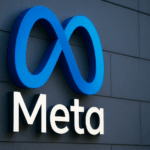Companies are increasingly diversifying their cryptocurrency portfolios by adding more ether, accumulating substantial holdings amounting to nearly $3.5 billion. This trend indicates a shift in corporate strategy, where ether is favored due to its potential for active returns and utility in the Ethereum network. Ether’s role extends beyond simply being a digital asset; it is influential in decentralized finance (DeFi) applications, influencing a growing corporate interest.
The preference for ether over Bitcoin has been on the rise, with many firms seeking to benefit from its unique properties. In previous years, Bitcoin was the primary choice for corporate treasuries, appreciated for its value retention. However, with Bitcoin primarily relying on price appreciation, ether provides an alternative by integrating into the Ethereum ecosystem through staking. This practice allows investors to receive rewards while supporting the network, offering returns ranging from 3% to 4%. Such opportunities cater to businesses looking for dynamic investment options.
What’s Driving Corporate Interest in Ether?
At the heart of ether’s appeal is its dual capacity as a valuable and legitimate blue-chip asset. Sam Tabar, CEO of Bit Digital, highlighted ether’s potential, stating,
“Ether balances growth potential with the legitimacy of a blue-chip asset.”
Companies are keen to explore its benefits, perceiving it as institutional-grade yet still offering potential for future growth as its adoption increases. Amidst these advantages, the Ethereum blockchain’s support for lending and trading makes ether a critical component of the crypto financial ecosystem.
Could Challenges Hinder Wider Adoption?
Promising as ether is, adoption hurdles remain, particularly regulatory uncertainties and its price volatility. Both elements pose significant concerns for companies in determining its fair valuation. Despite these challenges, the adaptability of ether in various applications continues to draw corporate interest. Businesses remain vigilant, assessing how these factors might affect long-term strategic decisions.
In other developments, the U.S. market is witnessing increasing adoption of stablecoins for cross-border transactions. These blockchain-based tokens, linked to fiat currencies, offer potential solutions to the traditional inefficiencies seen in the banking system. Companies still face issues such as high fees, long settlement periods, and heavy reliance on intermediaries, which stablecoins aim to address by offering quicker and more cost-effective alternatives.
The intersection of cryptocurrency and traditional finance is becoming more evident, a notion supported by recent reports. The overlap is growing as initiatives to integrate these systems increase, providing new avenues for corporations seeking efficient and scalable payment solutions. This transition reflects the continuously evolving landscape where both sectors are striving to enhance utility and performance.
As organizations evaluate these opportunities and challenges, their decisions in utilizing ether and stablecoins will strongly influence future market trends. The viability of this shift will depend on technological advancements, regulatory landscapes, and the ability of corporates to navigate this dual financial space effectively. Such dynamics indicate a mixed yet forward-looking progression for cryptocurrencies in corporate environments.










